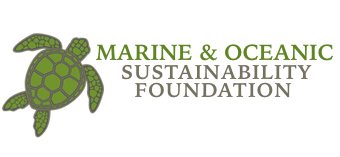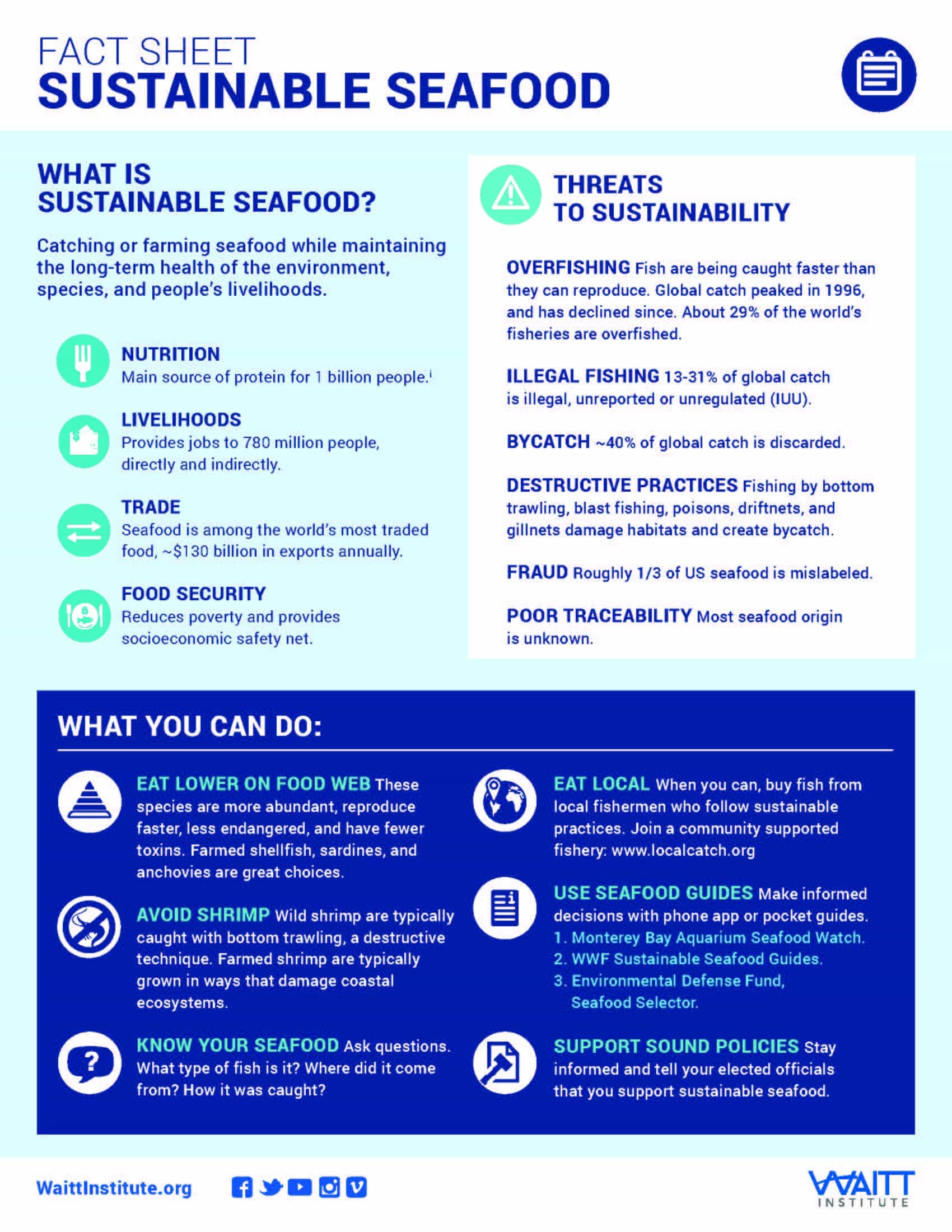“Two Billion People are Coming to Dinner and We Are Not Ready to Serve Them.”
“It’s ok to use the oceans, it’s not ok to use them up.
“This was the succinct, and eminently tweetable, summary of the Economist Magazine’s World Ocean Summit offered by Jane Lubchenco, currently a professor at Oregon State University and former Administrator of NOAA.
The World Ocean Summit brought together about 300 people divided between NGOs, government officials, journalists, business people and financing organizations. The depth and breadth of knowledge about oceans and fisheries was evident everywhere and made the meeting fascinating. One day of the meeting was devoted to a variety of in-depth sessions on many subjects. I had the opportunity to speak in the Aquaculture session. Below is a summary of my remarks at that meeting.
To begin, I was struck by the first sentence in the program outlining the session. It introduced aquaculture by saying: “As a counterpoint to the better stewardship and sustainable harvest of wild-catch fisheries, one controversial view suggests aquaculture as a solution to feeding the world.”
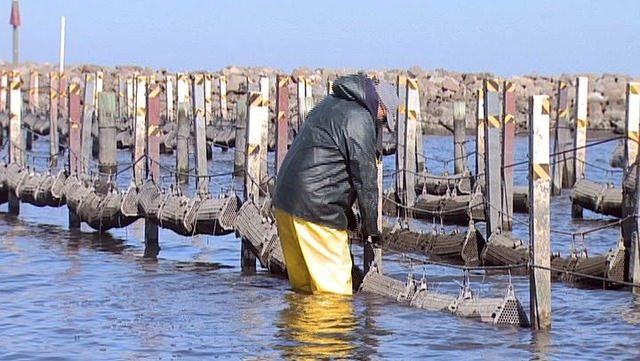 I would suggest to you that aquaculture is decidedly not a counterpoint to improvements elsewhere; it is an adjunct. The proper conjunction applied to seafood from wild catch and aquaculture is AND not OR. Better stewardship of wild fisheries is imperative as are the development and implementation of sustainable practices in aquaculture.
I would suggest to you that aquaculture is decidedly not a counterpoint to improvements elsewhere; it is an adjunct. The proper conjunction applied to seafood from wild catch and aquaculture is AND not OR. Better stewardship of wild fisheries is imperative as are the development and implementation of sustainable practices in aquaculture.
In addition, I must say that I was puzzled by the statement that aquaculture as part of the solution to feeding the world should be at all controversial. Both the Food and Agriculture Organization (FAO) of the United Nations and the World Wildlife Fund say that 87% of the world’s wild fisheries are harvested at or above their sustainable limits. From a very practical point of view, what this certainly means is that we cannot harvest more seafood from the oceans; what it likely means is that we should be harvesting less.
In the face of our population increasing from 7-9 billion in the next 25-40 years I contend that the only way for us to continue to eat fish is to farm them.
As corollary to this we must impose some very important expectations on aquaculture and its growth. While there are many, I would suggest these as two major expectations of aquaculture:
- It must result in the net production of fish.
- It must be sustainable.
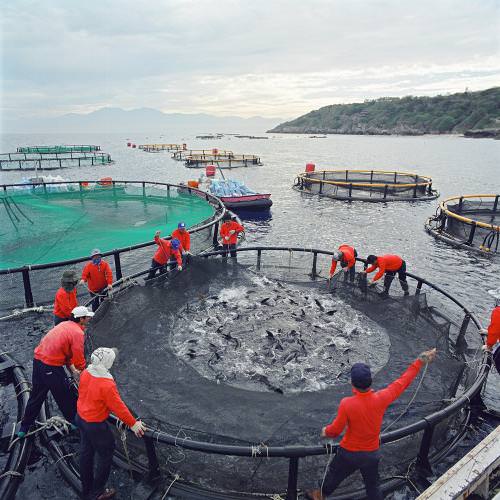 Some definitions are warranted here. Net production of fish means that aquacultural operations must result in the increase of fish or seafood biomass on the planet. This calls to question capturing and feeding wild fish to farmed fish and I will discuss this in greater depth below.
Some definitions are warranted here. Net production of fish means that aquacultural operations must result in the increase of fish or seafood biomass on the planet. This calls to question capturing and feeding wild fish to farmed fish and I will discuss this in greater depth below.
I would like to offer an operational definition of sustainable from two perspectives. From the point of view of the environment, sustainability means practicing now in ways that do not diminish our ability to practice in the future. The question I pose to myself is “What do we need to do so that we may continue to farm our fish in seven generations?” If we have this as our foundational focus then we are very likely to be asking and answering the most important questions.
The second important aspect is the sustainability of farming operations. Farmers must profit adequately from their work so there is sufficient incentive to remain in aquaculture.
These two goals-net production of fish raised sustainably-seem axiomatic. This is a good thing because it means our challenge then becomes how to go about achieving them and it is here that our work begins.
What then are some of the most important challenges?
There are many, however, I wish to hold up four to you as particularly important. Solution of these four do not resolve all issues but they make a very significant contribution in our journey to the farming practices that allow us to produce fish seven generations hence.
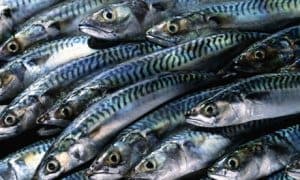
Mackerel
Wild fish such as anchoveta, sardines and mackerel are caught, rendered to fish oil and fish meal and subsequently included in the diets of farmed fish. Dependency of aquaculture on these wild fisheries must be broken. Historical practice in salmon aquaculture is that 3-4 kg of wild caught fish are required to make the feed to raise 1 kg of salmon. This is untenable. Our proper goal is not to use the wild caught fish efficiently but, rather, to develop the aquacultural practices that result in us not using them at all. As the FAO and other organizations have said-We cannot continue to capture wild fish to feed farmed fish. I will end below with two very hopeful stories about how this challenge is being addressed.
Both biodiversity and the environment must be maintained/retained at and near farm sites. Much is subsumed in these needs. Farms must be sited away from fragile ecosystems; the vagaries of interaction between farms and the local environment must be discerned; and farms must not be placed in areas of high carbon sequestration. All agriculture, whether land or water-based, has effects on the environment. In the case of aquaculture, effluents in their many guises must be controlled so that they do not adversely affect the environment-this means the water column, the benthos and adjacent areas.
The aquacultural practices of the future must reduce risk and raise productivity. Disease can result in cataclysmic losses. We witnessed this with Infectious Salmon Anemia virus outbreaks at salmon farms in the Faroe Islands in 2000 and in Chile in 2008. Currently there is a bacterial disease caused by Vibrio parahaemolyticus afflicting shrimp in Asia. This devastating disease may affect the ability of farmers to stay in business at all much less produce now in the face of the challenge.
Managing disease has, as one component, the cultural practices in place at farms. A public heath analogy is the overall healthfulness of lives led in Victorian London and current day New York City. Populations treated differently will respond differently and research is needed to help us understand what those best practices are.
With that said, there is one area where we know what we need. There is a crying need for rapid development of vaccines. With respect to disease, the best answer is to prevent it and not to treat it. Vaccines are crucially needed. Governments should help vaccine providers by establishing judicious and efficient trial programs that facilitate practical, rapid introduction of preventative measures.
Lastly, improved governance will enhance both environmental health and economic growth. Local, national and international attention to regulation that effectively fosters the twin goals of net production sustainably obtained is greatly needed. For this to happen, governments need to be more invested in aquaculture as a central player in agricultural production.
How best do we approach our goals and challenges?
In their pursuit expertise and contribution comes from many venues. NGOs and academic institutions help to identify and prioritize important environmental issues. Farmers, in consultation with those experts, then need to make the actual changes that happen on the water. Greatest benefits will be seen when this is a collaborative relationship with both partners assuming good will on the part of the other. From a parochial viewpoint, Verlasso has had continual conversations with environmental NGOs since our inception. By having conversations early we were able to incorporate their input as we developed. I believe we are better producers for having had those discussions. Also from my parochial point of view, I have found a huge reservoir of good will. People in the NGOs have been generous with their time and advice on questions we have posed to them.
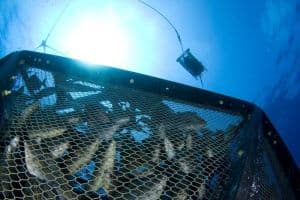
Kampachi Farms
I mentioned earlier that I would tell you two stories about aquaculture that show a hopeful future. The first is a group called Kampachi Farms. Neil Sims, its owner and founder, raises yellowtail tuna.
Tuna are carnivorous fish and their culture could make a significant call on fish meal and fish oil. With years of research Neil has now designed a tuna diet that contains no fish meal whatsoever. He is about to expand his operations and his new diet, over the next few years, will become a notable contribution to reducing pressure on wild caught and rendered fish. I would also say that the fish is simply delicious. His diet has not in any way compromised the quality of his tuna as delightful food.
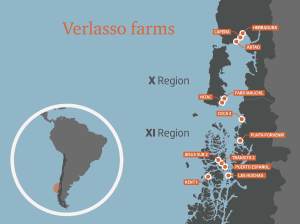
Verlasso Farms
At Verlasso, we are salmon farmers. Salmon, as I noted earlier, require a significant amount of fish oil to provide the omega-3s they require from their diets. At Verlasso we feed our fish a diet containing a yeast that makes the essential omega-3 and, in doing this, we lower the amount of fish oil we use in our diets by about 75%. This means that instead of 3-4 kg of fish in for 1 kg of fish out, we are 1 in and 1 out. We wish to take this further. However, in the last year, by feeding our diets we have saved over 6 million pounds (about 3 million kg) of feeder fish compared to what would have been consumed by a traditional salmon diet.
Let me conclude by saying again that aquaculture will succeed for us, writ large, when it results in the net production of fish produced sustainably by farmers who make a return that incentivizes them to remain farmers.
There is a real urgency for us to move to this status. 2 billion people are coming to dinner pretty soon and we are not ready to serve them.
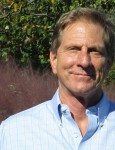
Scott E. Nichols
Scott is responsible for Verlasso’s NGO engagement and the ways we evolve aquaculture to meet the ever-growing demand for fish while preserving the ecosystems where fish are raised. Previously, Scott worked extensively on biodiversity projects in Africa and South America, giving him a deep appreciation for developing comprehensive approaches to sustainable food production. Scott’s education includes a Ph.D. in biochemistry from UCLA and Wharton’s Advanced Management Program. “I have a complete and total belief that we must act with urgency to find the most sustainable ways to produce good and healthy food. Big and little steps are both important.”
